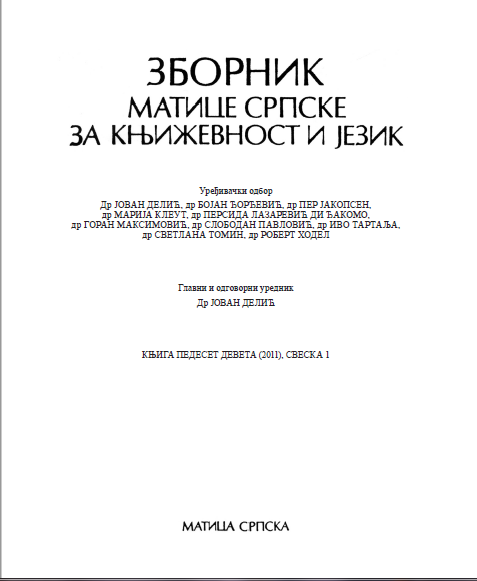ТЕЛО У РОМАНУ НЕЧИСТА КРВ БОРИСАВА СТАНКОВИЋА
BODY IN BORISAV STANKOVIĆ’S NOVEL NEČISTA KRV
Author(s): Nataša IvkovićSubject(s): Serbian Literature, Theory of Literature
Published by: Матица српска
Keywords: Borisav Stanković; Impure Blood; erotic scenes;
Summary/Abstract: Borisav Stanković’s novel Nečista krv (Impure Blood) (1910) is rather famous for its erotic scenes in which it abounds, the most famous of them certainly being bathing in the hammam and Pčinja wedding feast, and above all erotic wooing of the main heroine Sofka. However, somehow aside of all critics’ interests there remained the descriptions of the external (physical) appearance of Sofka, and there are surprisingly many of them in the novel; the writer almost obsessively follows and observes the body of his heroine, portraying it in different positions and in various movements, in all its beauty and fullness. And these descriptions do not have only the esthetic, but also a highly functional value. Concretizing erotic appearance and attractiveness of the main heroine, they primarily emphasize the impressiveness of her character, but they also significantly contribute to its psychological characterization. Through the description related to the topic of body position, the novel reveals an important psychological characteristic of Sofka’s character: underlined feeling for her own body, which means a high awareness of herself. Descriptions related to the topic of body parts, which are also more numerous, have a somewhat more complex function, because the body of the main heroine, in addition to a highly erotic one, implies a certain symbolic meaning. Neck, hair and bosom are the body parts with the greatest frequency and the most significant part in the novel; they are the symbols and bearers of: the erotic, erotic power and, at the end, Eros himself, erotic instinct. In Nečista krv, the motive of neck and hair realizes the link between the erotic and the incestuous, that is erotic and demonic, while the motive of bosom has the function of revealing and portreying the heroine’s inner experiences and spiritual states and moods. The most interesting of them all are the motive of the (feeling of) nakedness and the motive of petrification, through which Stanković represented the loss of social and personal identity of his heroine.
Journal: Зборник Матице српске за књижевност и језик
- Issue Year: 59/2011
- Issue No: 1
- Page Range: 73-98
- Page Count: 26
- Language: Serbian

